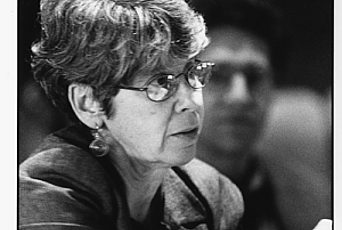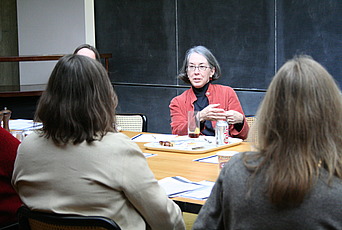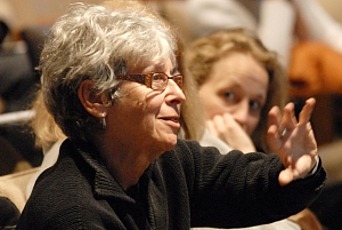Cover-Up: French Gender Equality and the Islamic Headscarf

Underlying the 2004 law banning the wearing of Islamic headscarves in French public schools is a fundamental clash between French and Muslim gender systems, according to Joan Wallach Scott, Harold F. Linder Professor in the School of Social Science. In her December 5 public lecture “Cover-up: French Gender Equality and the Islamic Headscarf,” Scott analyzed one of the justifications given by French lawmakers for the ban—that they were protecting the equality of women, a founding principle of the French republic.
Drawing from her recently completed book The Politics of the Veil: Banning Islamic Headscarves in French Public Schools, which is scheduled to be published by Princeton University Press in the fall, Scott concluded that, among other things, the Islamic headscarf revealed a “persistent contradiction in French political theory between political equality and sexual difference. Politicians and republican theorists have dealt with this contradiction by covering it over, by insisting that equality is possible while elevating the differences between the sexes to a distinctive cultural character trait.”
France’s “great emphasis on the visibility and openness of seductive play between women and men, and especially on the public display (and sexual desirability for men) of women’s bodies,” Scott said, thus “serves to veil a constitutive contradiction of French republicanism.” Scott further noted, “Until their confrontation with Islam, many French feminists saw the sexual exhibitionism of their society as demeaning to women because it reduced them to a sexed body. But in the heat of the headscarf controversy, those concerns were set aside and equality became synonymous with sexual emancipation, which in turn was equated with the visibility of the female body.”
Beginning with the text of the French law, Scott pointed out the lawmakers’ use of the word “conspicuous” to describe those religious signs (such as veils) that were prohibited versus their use of the word “discrete” to distinguish those religious signs (such as small crosses and Qurʾāns) that were permissible. “I was struck by the sexual connotation carried by the words the lawmakers chose,” Scott said. “When ostentatious or conspicuous refers to an excessive display on or by a body, especially if it’s a woman’s body, it conveys a sense of erotic provocation. Discrete is the opposite of ostentatious or conspicuous; it doesn’t call attention to itself, it downplays the attractiveness of the body in question; it is somehow neutral-asexual.”
The law’s wording was particularly striking, said Scott, considering the fact that the Muslim headscarf is meant to signify modesty and sexual unavailability. “By what standard could girls wearing headscarves be considered disruptive, immodest or conspicuous?” Scott asked. “How then account for this seemingly strange reversal: Muslim modesty is taken to be sexually aberrant by French observers, who condemn it not only as different, but as somehow excessive (ostentatious, conspicuous), even perverse. The reason given by politicians and many feminists was the same: the veil represented the subordination of women, their humiliation, and their inequality.”
For Scott, the Muslim headscarf confronts a deep and discomforting reality of gender relations in France. “It makes explicit—available for all to see—the rules of public gendered interaction, which are in no way contradictory, and which declare sexual exchanges out of bounds in public space,” Scott said. “It is this explicit acknowledgment of the problem of sexuality that, for French observers, makes the veil ostentatious or conspicuous in the sexual sense of those words. Not only is too much being said about sex, but all of its difficulties are being revealed.”


